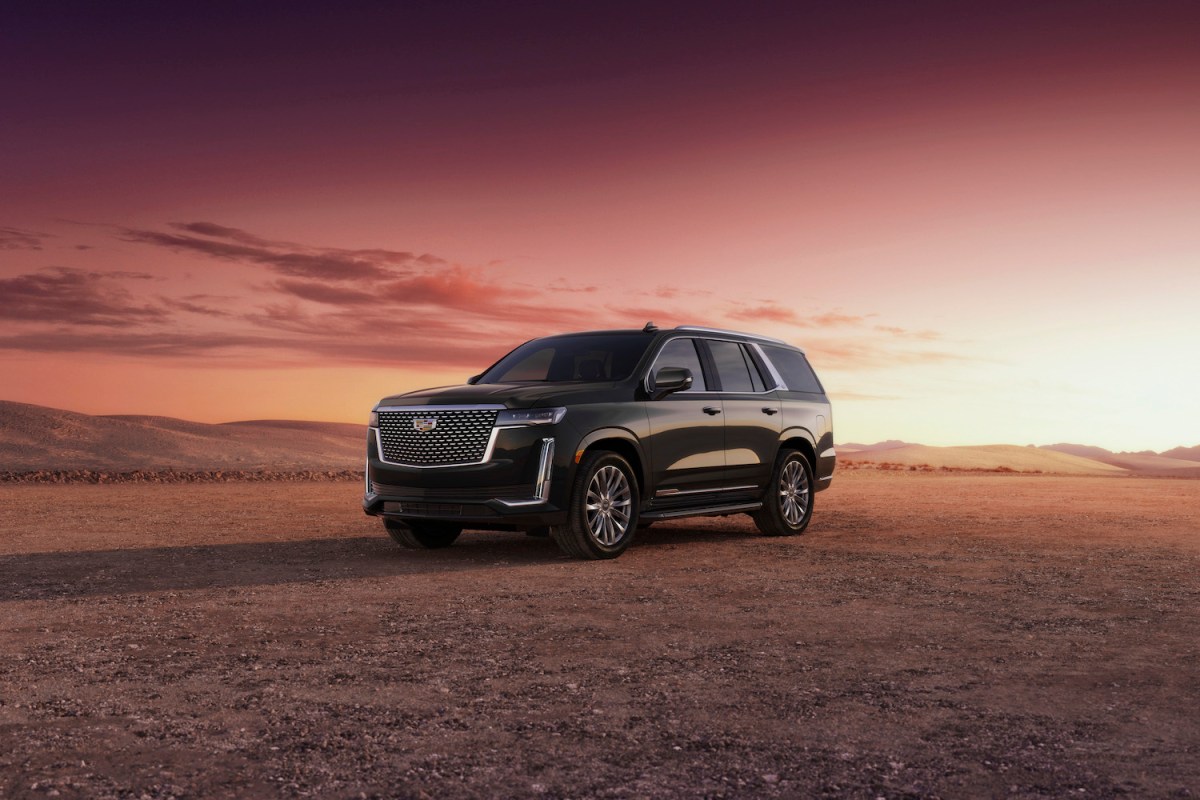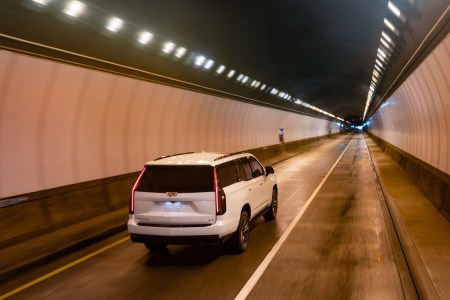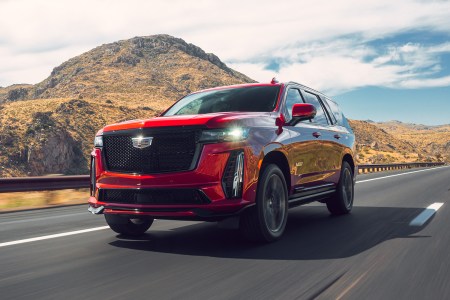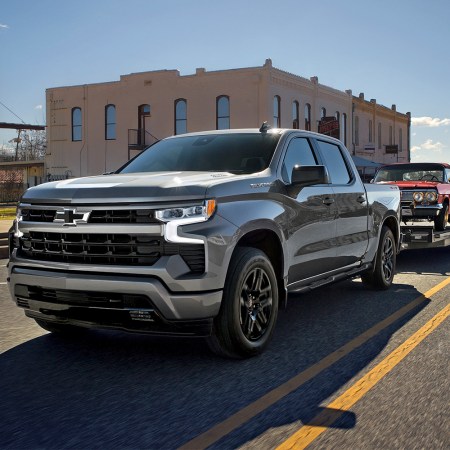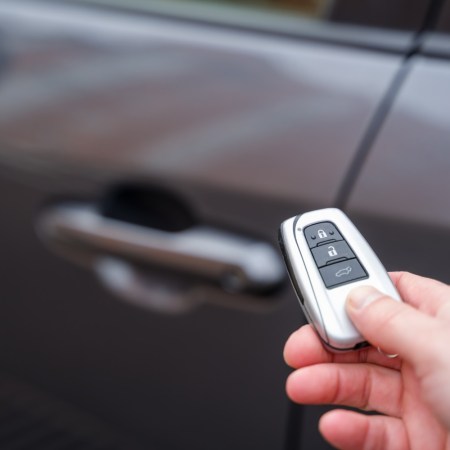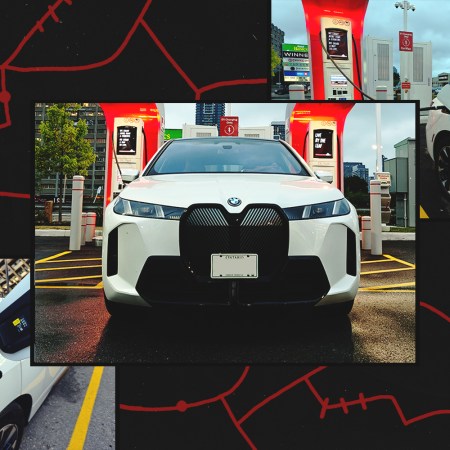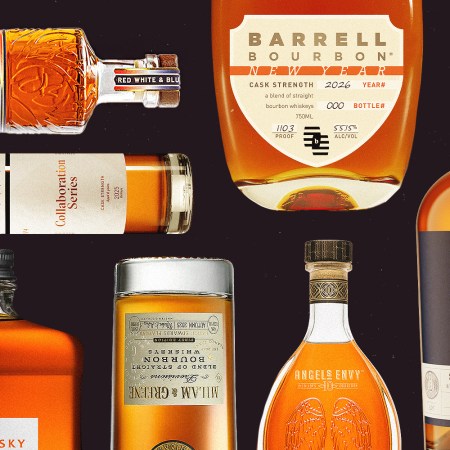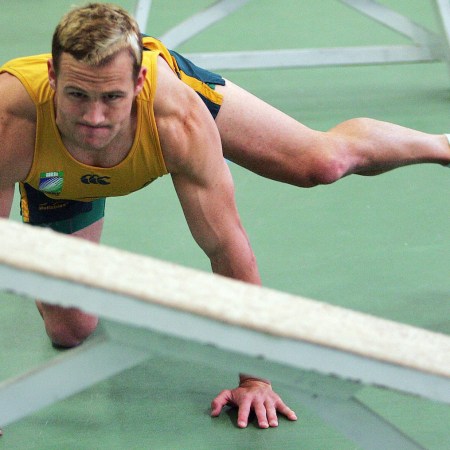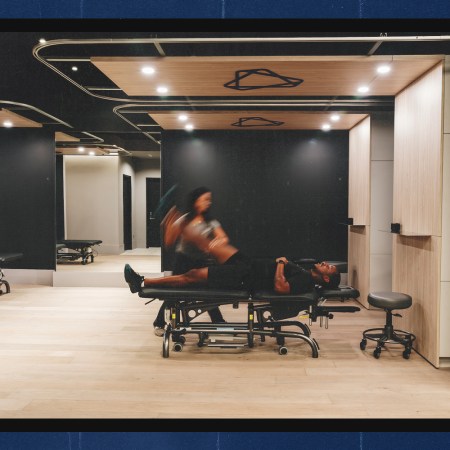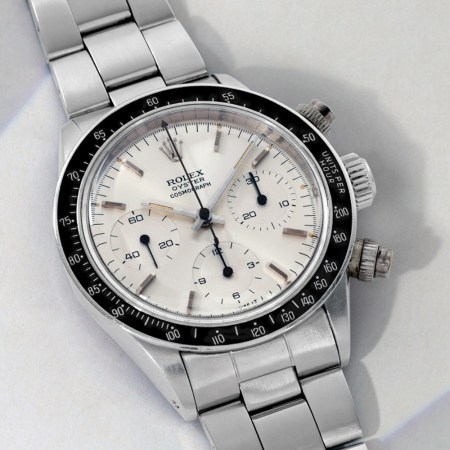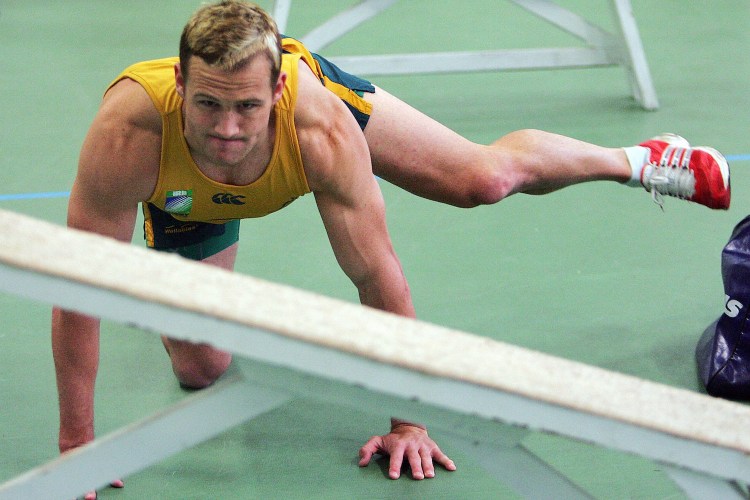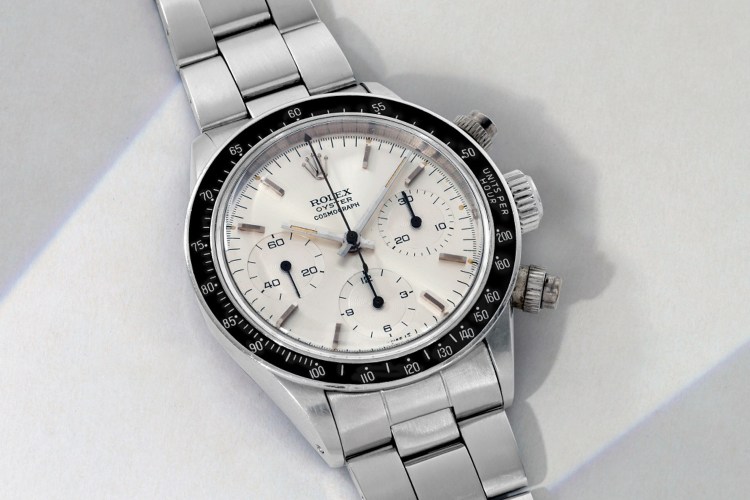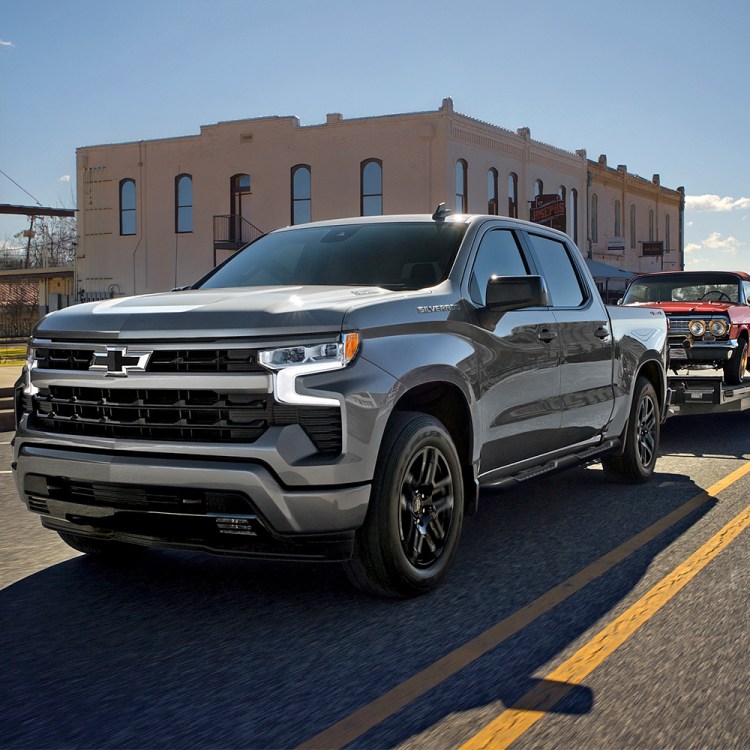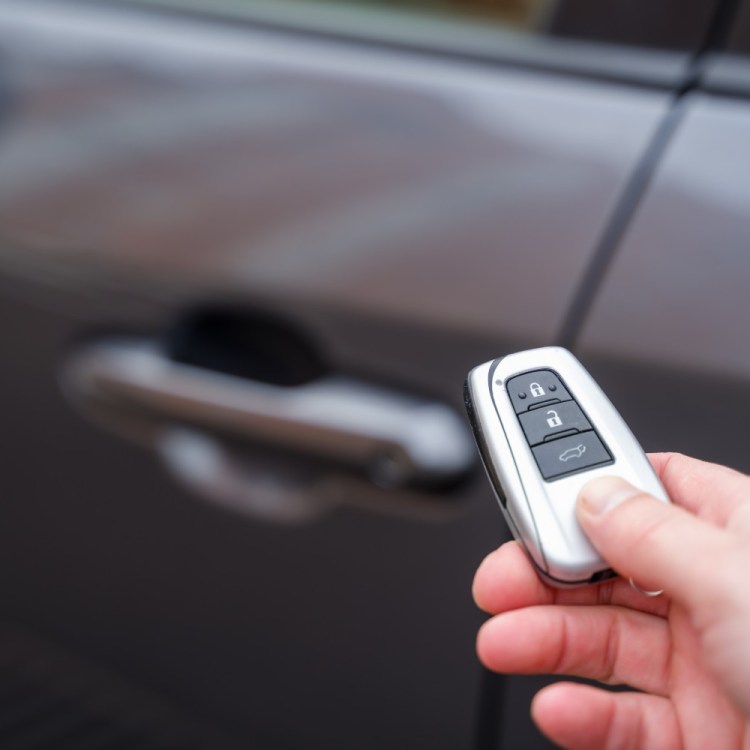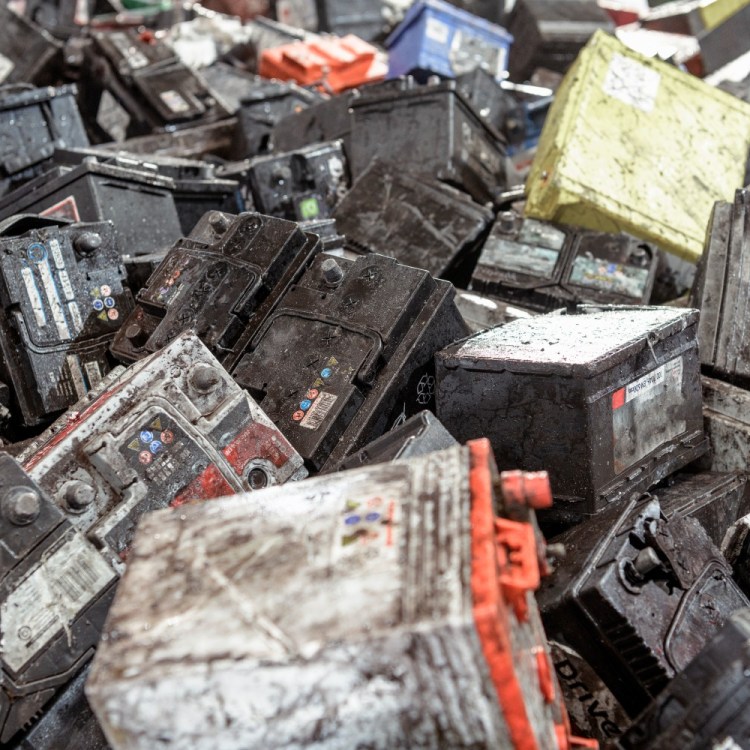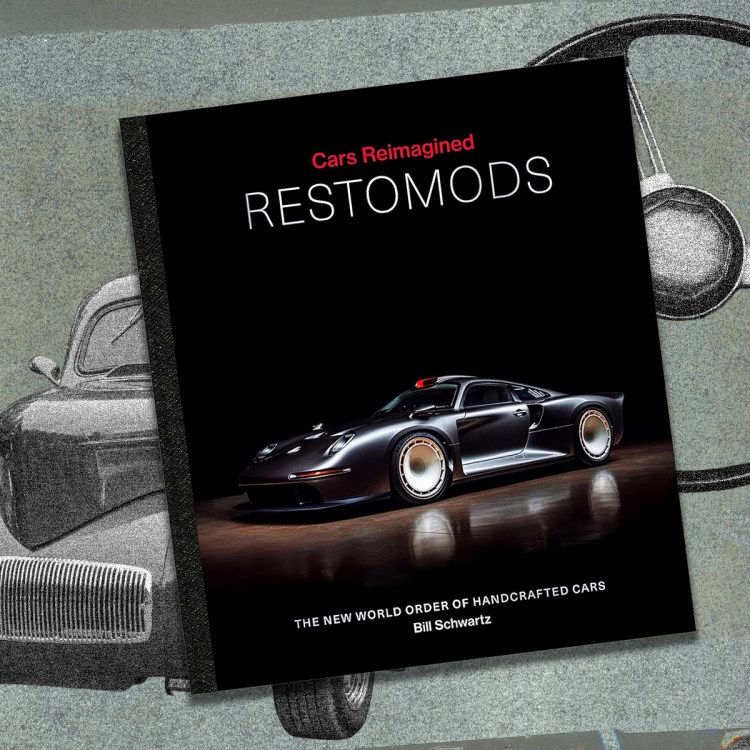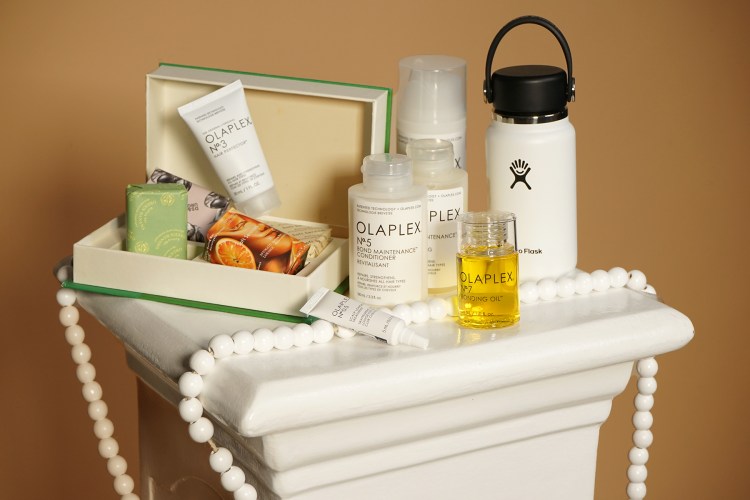In the age of automation, having trust in machines is increasingly a part of day-to-day life. For drivers, that means interacting with a growing range of advanced driver assistance systems (ADAS) and having faith that their digital interventions in the steering, acceleration and braking departments are all executed as part of a master plan to keep both occupants — and everyone else in the immediate area — safe and sound.
All of the above is a lot to ask of any high-tech trust exercise, especially when played out in an environment as clogged and chaotic as a modern highway. When testing out the latest and greatest ADAS to come from Cadillac, Super Cruise, I decided to go one further and place more than just my own person under the vigilant eye of its cybernetic sentinels. I also yoked up a 12-foot U-Hail trailer sitting under my 45-year-old race car and entrusted it all to the system’s new towing feature, which promised to faithfully transport both humans and cargo at interstate speeds without anyone having to touch the steering wheel.

What’s it like handing over the care of your classic race car to the ones and zeros controlling the Cadillac’s Super Cruise system? It was a case of yesterday meets tomorrow as I tried to stay calm and trust the process for over 800 miles with my hands folded nervously in my lap.
Super Cruise, Super Trustworthy
It certainly helped cool my concerns about a robot handling the long-distance tow of my 1978 Datsun 280Z to know first-hand just how excellent the Super Cruise system is when tasked with normal driving. By far the best ADAS I’ve had the opportunity to sample, the Cadillac technology (also available on select GMC models) makes use of not just an extensive array of on-board sensors, but also hyper-accurate maps that cover hundreds of thousands of miles of highway, allowing it to essentially steer and drive itself with almost no intervention on the part of the pilot.
While at first this might seem like a limitation, the mapping component is what truly sets Super Cruise apart from its rivals. Yes, the feature only functions where Cadillac’s cartographers have made their measurements, but with nearly a half-million miles of road in its database there are few high-speed transits that fail to fall under its purview. The decision to limit Super Cruise to extra-urban excursions keeps the system honest. Rather than trying to anticipate every single possible situation in a busy city center, parent company General Motors has instead honed Super Cruise to handle more predictable asphalt that it knows like the back of the, uh, skeletal metal hand it keeps locked on the steering wheel.
Making The Math Work
As solid as Super Cruise is at handling the curves and traffic of commuting, adding a trailer into the mix introduces a new set of computerized calculations that have so far kept any other semi-autonomous driver’s aid from number-crunching its complications. Tacking on a trailer not only lengthens a vehicle’s overall footprint, but it also adds extra mass for the braking and steering systems to deal with. Both of these factors — which are unpredictable and can vary from one load to the next — play key roles in how a suite of sensors interacts with the world around it, to the point where other manufacturers have simply turned their backs on trying to make it work.
Cadillac’s Next EV Will Be an Electric Escalade
A full reveal for the Escalade IQ will come later in 2023In contrast, the 2023 Cadillac Escalade ESV (the longest, largest SUV in the automaker’s fleet) takes on the towing challenge by incorporating the data at hand into its existing self-driving algorithms. The truck is able to calculate a “close enough” weight for the trailer by comparing how much throttle input is required to move the load at a given speed. In terms of the trailer’s size, 360 degrees of radar sensing keeps an eye on, not just traffic around the SUV, but also what’s being tugged directly behind it. Cadillac already offered a trailer sway control system that keeps track of any forces being placed on the hitch that could indicate unwanted movement behind the bumper, allowing the vehicle to use its brakes and throttle as a counter-move.
All of that info is collated by Super Cruise, which then adjusts its following distance to reflect the additional amount of road required to slow down safely in traffic (as it takes a lot more braking power to haul down all that extra weight). It also knows how long the truck-plus-trailer is overall, which taken together with overall mass informs steering inputs on top of speed control decisions. This information is further fed to its blind spot monitoring system to help drivers gauge whether they’ve cleared the car beside them when swapping lanes.
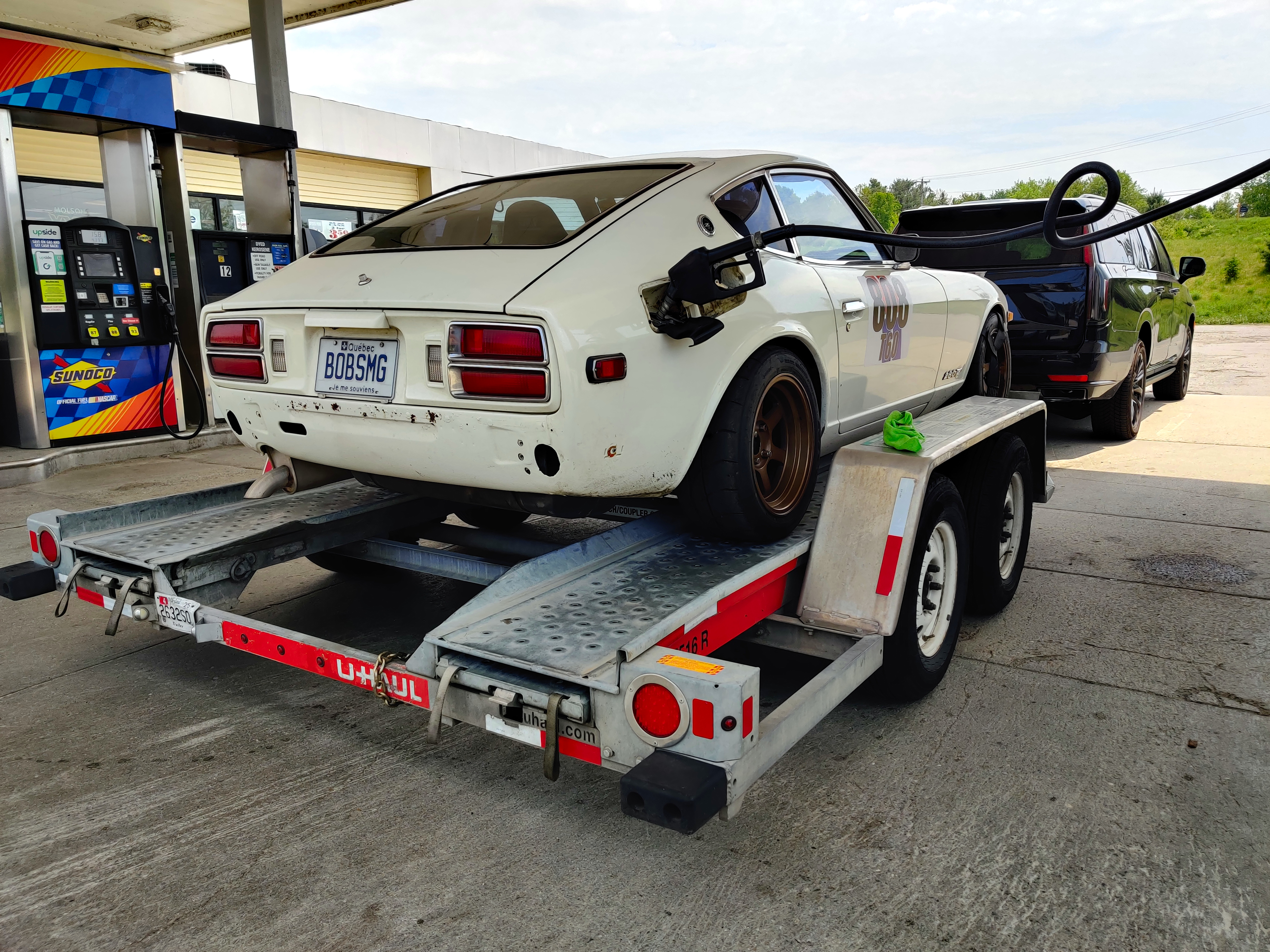
Keen Cadillac fans make note: as that last sentence indicates, hitching up a trailer to a Super Cruise-equipped vehicle disables its automatic lane change feature (in which the SUV or sedan can pass slower traffic at its own volition). It’s the only towing-related restriction placed on the ADAS.
“Super” Cruising
Even for someone already pre-disposed by past experience to trust Super Cruise, putting the fate of my Datsun, let alone my own skin, in the hands of a self-steering system tasked with transporting a 31-foot self-contained convoy weighing in at more than 11,000 pounds total was a major leap of faith.
Helping to steady my nerves was the knowledge that the Escalade ESV is already a tow platform par excellence. With roughly 8,000 pounds of maximum capacity, the weight of my 280Z and the trailer together were nowhere near the limits of the vehicle’s chassis. Throw in the additional control provided by its extended wheelbase (versus the standard Escalade) and the 420 horsepower, 6.2-liter V8 under its hood, and I knew the nuts and bolts of the towing experience were well covered.
With the trailer hitched and wired up, and the gauge cluster reminding me to activate tow/haul drive mode (which allows for better engine braking and more aggressive gear selection from the transmission), I was ready to entrust both my soul and my Datsun’s aged sheet metal to the promised protections of Super Cruise. Pointing the truck in the general direction of Palmer Motorsports Park in Massachusetts, I hit the button on the steering wheel, waited for the sizable LED notification at the top of the tiller to illuminate, and then removed myself from the act of driving.
Exactly 30 seconds later, I could feel the muscles in my neck and upper back begin to relax. Holding all that tension in anticipation of Super Cruise’s towing debut had proven to be entirely anticlimactic. There was nothing to mark the moment of handover, no shudder or twitch from the Cadillac as it took responsibility for steering the caravan. Moving out of Montreal’s construction-marred road network into open highway proved to be a non-issue at all for the Escalade, which tracked straight and true at 75-mph with nary a concern for the weight at its back.
It wasn’t until I had crossed the border into Vermont that I began to experience a few unusual indications that Super Cruise was having trouble with its tandem load. On some stretches of I-91 I began to experience light pinballing from the Cadillac as it steered itself slowly from one side of the lane to the other in a back-and-forth motion. I couldn’t tell if there were any special circumstances instigating the unusual behavior, which I had never experienced during unladen Super Cruising. Although the vehicle never felt out of control, there were times when I steadied the steering with a single hand in a bid to straighten out the path the truck was seeking.
Other than this occasional light pinballing (which occurred off and on for the duration of my trip, and again, with seemingly no external indications as to why), Super Cruise’s capability to transport a trailer was impressive. On the way to the track we were hit with what can only be described as “hurricane rain,” dropping visibility to near zero but having no effect whatsoever on the Escalade’s ability to maintain a safe and carefully-plotted path down the road. On the way home, as we plunged deep into the night, Super Cruise had no difficulty locating lines on the pavement, keeping us trucking safely through the darkness.
During the entire 800 miles or so of towing, the system only turned itself off a few times. Each deactivation was accompanied by fair warning from the steering wheel LED, which flashed red to indicate that the system was no longer guiding the vehicle, and usually occurred as a result of encountering a construction zone where lane markings had been wiped out.
In some of these cases I couldn’t tell why, exactly, the system had turned itself off, but it almost immediately made itself available for reactivation again in a few seconds. Momentary hiccups are going to happen during any long trip, and where Super Cruise excels is at never making you guess at the system’s state of readiness. This stands in stark contrast to so many other driver’s aids that rely on difficult-to-see icons buried in the gauge cluster, and which stealthily activate and deactivate without any real warning.
Review: The 2023 Cadillac Escalade-V Is a Roadgoing Mega Yacht With Rocket Power
A supercharged V8 in a three-ton SUV…what could possibly go wrong?Overall, road work posed no real challenge to Super Cruise. In one semi-harrowing instance the Escalade even insisted it was good to steer itself through an extremely tight channel carved out of concrete Jersey barriers. But the additional width of the trailer in the rearview mirror had me concerned enough to take over the driving duties.
Cruise Under Control
What are the advantages of handing over the reigns to Super Cruise when towing over long distances? While I wasn’t completely out of the driving mix through Vermont’s Green Mountains (as I was required to overtake traffic and judge lane changes on my own), it’s safe to say that having the Escalade make most of the driving decisions for me reduced my overall fatigue on both ends of the journey. This was especially appreciated on the way home, where a six-hour drive following a full day of booting my hot and noisy tin can of a race car around a track stretches the limits of human focus.
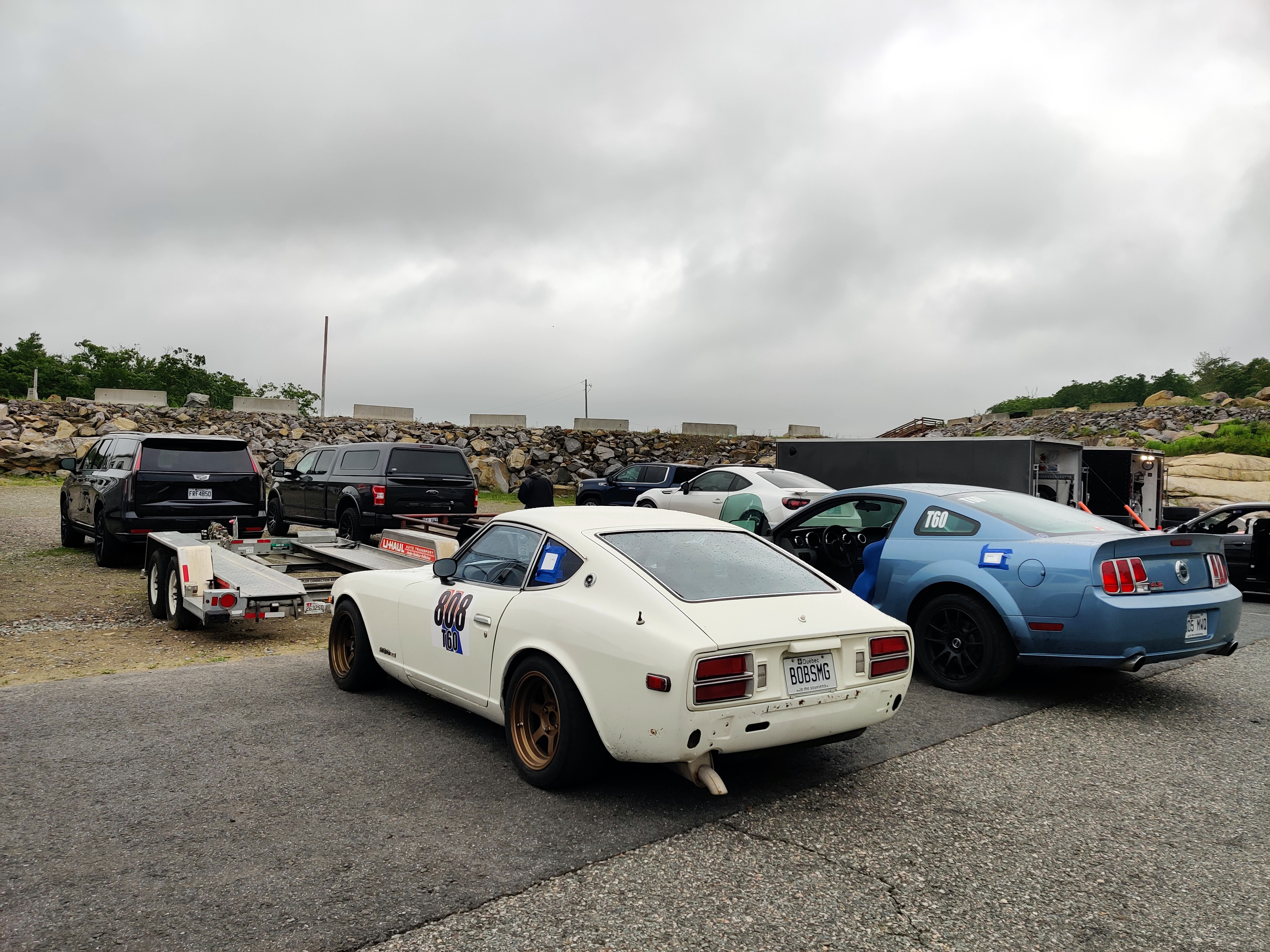
It’s safe to say that, aside from the previously-mentioned gentle pinballing, I was quickly able to trust in the decisions being made by Super Cruise. There was really only one moment where the vehicle took a downhill corner perhaps a little more aggressively than I would have attempted, given the load hanging off its tail. Otherwise, its speed and steering decisions felt well-reasoned and distinctly un-alarming. Still, the experience wasn’t entirely without apprehension, as there’s always a part of your lizard brain strongly suggesting that, hey, maybe your hands really should be on the steering wheel of this speeding four-ton circus. Ignoring that persistent voice and putting one’s faith in a modern safety system eats up at least a few cerebellum clock cycles.
I came away impressed that Cadillac has been able to extend its Super Cruise technology — truly the brand’s killer app — into the towing arena, where so many Escalade owners (and on the GMC side, Sierra and Yukon customers) operate. It’s rare that an automaker’s best feature is applicable across such a wide range of driving situations, and it’s a testament to GM’s engineers that they have been able to make that happen. For most enthusiasts, the digitization of driving has taken away more than it has added to the experience of owning a modern automobile. Rolling my Datsun off the trailer just before midnight here in Montreal, however, I reflected on the fact that I just had relied on one of the luxury market’s most advanced robots to handle hundreds of miles of towing specifically so I could pilot an entirely analog race car — the kind of driving I truly enjoy — without suffering from the weariness that slog would normally entail. In this instance, being able to take advantage of the future of the automobile so I could better enjoy its past is a trade-off I would make again.
This article appeared in an InsideHook newsletter. Sign up for free to get more on travel, wellness, style, drinking, and culture.
